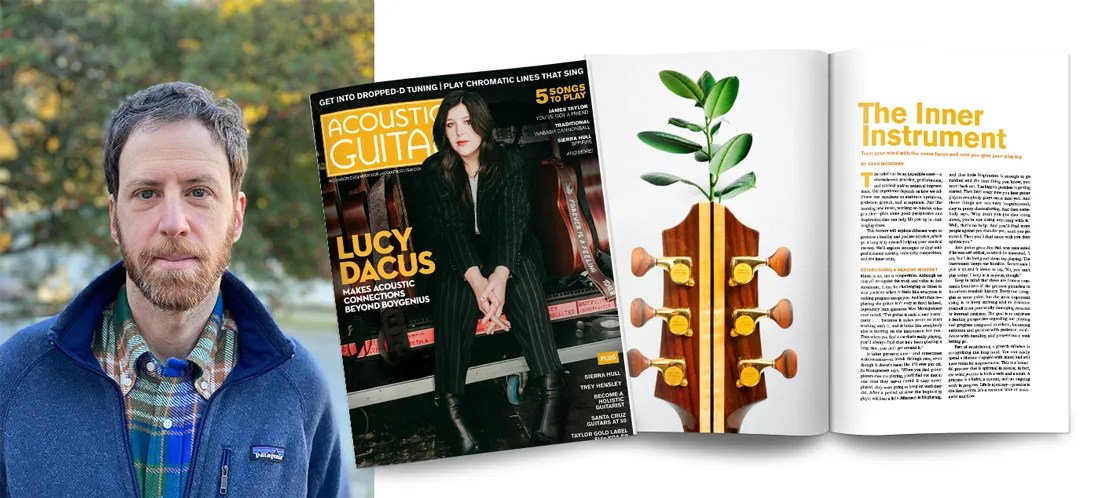
Letter from the Editor | Acoustic Guitar Issue 355
FROM THE NOVEMBER/DECEMBER 2025 ISSUE OF ACOUSTIC GUITAR MAGAZINEThe steel-string acoustic guitar is everywhere, but we don’t always hear it. It’s in the background of daily life—on records, in living rooms, onstage—and easy to take for granted. What makes the instrument worth paying attention to are the musicians and builders who keep finding new ways to make it matter. This issue focuses on some of them.
Our cover story features singer-songwriter Lucy Dacus, best known for her work in the acclaimed indie band boygenius. Her new solo album, Forever Is a Feeling, is as direct as anything she’s made. Many of its songs were written while walking and then shaped on a modest acoustic she’s owned for years. The arrangements are simple, grounded in solid playing and plainspoken lyrics that stay with you. In her interview with Isa Burke, Dacus talks about how her process has evolved, how the guitar continues to shape her writing, and why she trusts it to carry the most personal parts of her work.
Sierra Hull appears elsewhere in these pages with her own version of growth. Known primarily for her virtuosic mandolin playing, she has brought guitar more fully into her music in a way that adds depth without changing her voice as an artist. Her new record, A Tip Toe High Wire, reflects that approach. In “Spitfire,” presented here in World Premiere, she writes about her grandmother’s resilience with a song that’s precise in craft and deeply felt—a reminder that great playing is most powerful when it serves the story behind it.
Other departments consider how songs endure across generations. In Campfire, Maurice Tani interprets “Wabash Cannonball,” a tune that has rolled through American music for more than a century. Alan Barnosky brings Matteo Carcassi’s 19th-century Etude No. 1 into the flatpicker’s repertoire for Pickin’, illustrating how classical technique can strengthen roots music skills. Acoustic Classic features James Taylor’s version of Carole King’s “You’ve Got a Friend,” which still sounds fresh today, a lesson in how well-placed embellishments and a steady sense of time can support a song without overwhelming it.
Sierra Hull, Lucy Dacus, “You’ve Got a Friend,” Richard Hoover and Trey Hensley, Matteo CarcassiAs always, for players eager to deepen their understanding of the instrument, this issue delivers practical guidance. Our resident repair expert, Martin Keith, explains fretboard radius—what it is, why it exists, and how it affects your playing. Roots musician Mary Flower shares how the simple change to dropped-D tuning can open up your playing. In Weekly Workout, Berklee professor Jane Miller contributes chromatic studies that add motion and tension to a line without sacrificing clarity.
We also spotlight musicians and builders whose work has stood the test of time. Trey Hensley, long admired as a sideman, steps forward with a record that prioritizes tone and touch over speed. Luthier Richard Hoover reflects on 50 years at Santa Cruz Guitar Company—what has changed, what has stayed the same, and how to keep building instruments that players hold onto for life. And in Great Acoustics, Collings’ custom Austin City Limits C10, crafted from the PBS show’s original stage boards, carries the history of those performances into the hands of the next player.
Taken together, these stories show an instrument that remains relevant not because of constant reinvention, but because of the people who continue to do meaningful work with it. That’s why we make this magazine: to document and celebrate that work, and to keep the conversation going between musicians, makers, and listeners.
Thanks for reading, and for being part of that conversation.
To Read the Issue:











